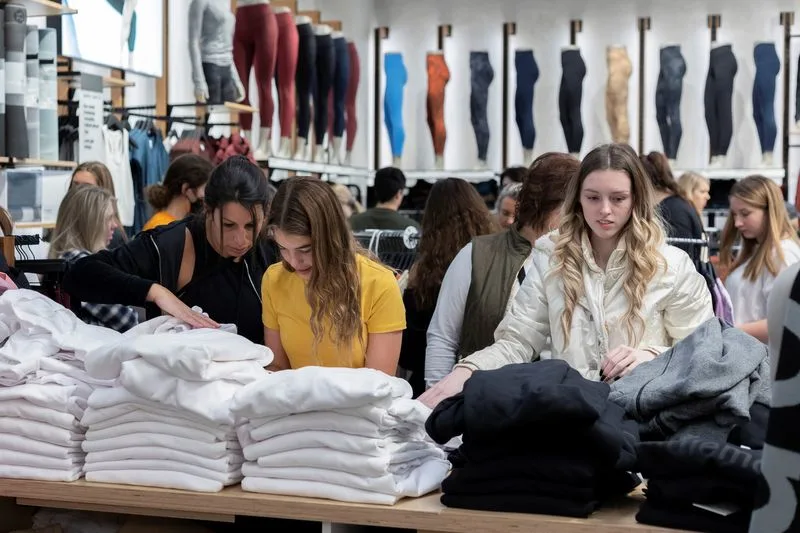According to the Commerce Department, the U.S. economy expanded at a slower pace in the first quarter than previously thought. This was due to downward revisions in consumer spending and a decrease in a key measure of inflation. As a result, the Federal Reserve may consider cutting interest rates before the end of the year. Gross domestic product, which is a measure of economic activity, grew at an annualized rate of 1.3% from January to March, lower than the initial estimate of 1.6% and significantly slower than the 3.4% growth in the last quarter of 2023.
The recent downgrade in first-quarter growth indicates that the Federal Reserve’s strategy of gradually slowing down the economy through higher interest rates is starting to have an impact. Consumers are becoming more resistant to higher prices, which could potentially weaken inflation further. Additionally, corporate profits have experienced a decline for the first time in a year, dropping by 0.6% to $3.39 trillion from the previous quarter’s record high.
Bill Adams, the chief economist at Comerica Bank, suggests that these downward revisions in economic growth and inflation increase the likelihood of the Fed reducing interest rates by September. As the economy operates at a slower pace, there is a growing margin of unused capacity, and consumers are feeling less financially secure.
According to data released by the National Association of Realtors on Thursday, contract signings for home purchases in the U.S. experienced the sharpest decline in three years in April, reaching the lowest level since the beginning of the COVID-19 pandemic in spring 2020.
The latest GDP report revealed that consumer spending growth was revised downward by half a percentage point to a 2.0% annualized rate, primarily due to a larger-than-previously-reported decrease in household spending on goods. The decline in spending on big-ticket durable goods, such as motor vehicles and parts, had the largest negative impact on growth since the third quarter of 2021. However, the report also indicated upward revisions in business investment, driven mainly by spending on Artificial Intelligence and other technologies, as well as increased outlays for residential investment, which was attributed to a rise in single-family homebuilding.
The first-quarter measure of inflation has been revised downward from 3.4% to 3.3%, marking the strongest price-pressure growth in a year.
Although inflation had been easing throughout last year, it unexpectedly rose at the beginning of 2024. This has led Federal Reserve policymakers to delay their plans for interest rate cuts.
As a result, yields on Treasury securities experienced their largest decline in two weeks, as investors became more hopeful for at least one rate cut this year. On the other hand, U.S. stocks continued to decline for a second consecutive day, and the dollar weakened across the board.
Investors in contracts tied to the Fed’s policy rate slightly increased the probability of rate cuts starting in September, but they still predict no more than two rate cuts by the end of 2024.
The revision to GDP has resulted in the first-quarter growth rate being the lowest since the second quarter of 2022, when the economy contracted. This puts output below the 1.8% rate considered by Fed officials as its longer-term, non-inflationary potential.
Gross domestic income (GDI) experienced a sharp decline, growing at a rate of 1.5%, compared to the fourth quarter’s 3.6% rate. This is the lowest growth rate since the second quarter of 2023. The average of GDP and GDI, which is considered a better measure of economic activity, was 1.4% – also the lowest in three quarters.
The report also highlighted a weakening demand measure, which has been a concern for U.S. central bank officials, including Fed Chair Jerome Powell. They are looking for a slowdown in consumption to help lower inflation.
The growth in final sales to private domestic purchasers has been revised down to 2.8% from 3.1%. This is the lowest figure since the second quarter of 2023, and it is a figure that was recently cited by Powell at a press conference as it usually indicates underlying demand.
However, the slow start to the year is not expected to continue into the second quarter, partly due to the strong job market. The labor market remains tight, as seen in the number of Americans filing new claims for unemployment benefits last week. Although jobless claims increased slightly, the labor market continues to show signs of strength and should continue to support the economy.
According to the Labor Department, initial claims for state unemployment benefits rose by 3,000 to a seasonally adjusted 219,000 for the week ending May 25. This was slightly higher than the forecast of 218,000 claims by economists polled by Reuters.
According to the claims report, the number of continuing claims, which tracks those who receive benefits beyond the first week, increased by 4,000 to reach a seasonally adjusted 1.791 million in the week ending May 18.
Following a series of interest rate hikes by the Fed since March 2022, amounting to 525 basis points, the labor market is gradually readjusting to slow down demand in the overall economy. However, the level of layoffs remains relatively low, with the rebalancing primarily driven by reduced hiring activity.
Lydia Boussour, a senior economist at EY-Parthenon, noted that momentum in the labor market is gradually slowing down as labor conditions cool. Younger and lower-income consumers are becoming more cautious, and businesses are reassessing their talent needs due to higher financing costs and weaker demand.
In a separate report, it was revealed that the goods deficit in April, which measures the gap between exports and imports, reached its highest level since May 2022. This was attributed to strong domestic demand for imports not being matched by export trade.
